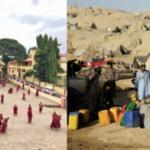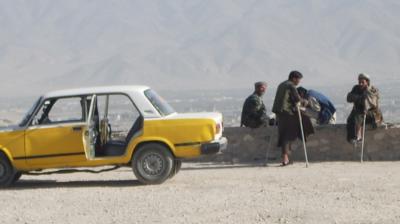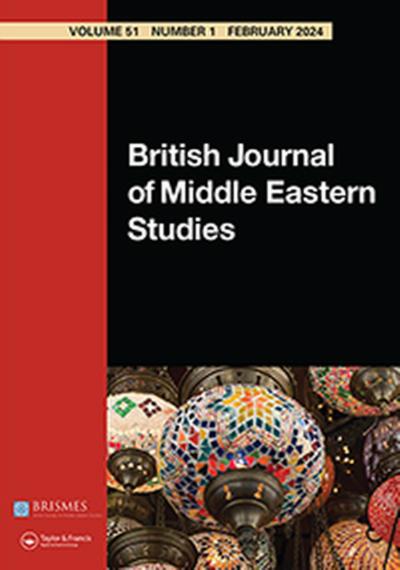Examining poverty and food insecurity in the context of long-term social-ecological changes in Kabul, Afghanistan
Research locations and piloting
Social-ecological system (SES) and traditional livelihoods
How to cite this publication:
Yograj Gautam, Anwesha Dutta, Patrick Jantz, Alark Saxena, Antonio De Lauri (2023). Examining poverty and food insecurity in the context of long-term social-ecological changes in Kabul, Afghanistan. Bergen: Chr. Michelsen Institute (CMI Report 2023:1)
This report examines how long-term socioeconomic and environmental changes have shaped the context for poverty and food insecurity in Afghanistan. An estimated 97% of the population is currently under the poverty line and over half the population of 36 million people need immediate humanitarian support., Following the Taliban takeover of the country in August 2021, Afghanistan has faced an international freeze on development and governance assistance, a freezing of the Afghan State Bank’s assets in the United States and Europe, a severe weakening of both private and public sector and a mass-scale unemployment. This, coupled with the rise in commodity prices has increased poverty and hunger prevalence to emergency levels. Moreover, new regulations imposed by the Taliban leadership on female education, employment and mobility has increased challenges for women to accessing jobs in both private and public sector. The situation looks likely to worsen in both the short and longer terms.
Introduction
This report examines how long-term socioeconomic and environmental changes have shaped the context for poverty and food insecurity in Afghanistan. An estimated 97% of the population is currently under the poverty line and over half the population of 36 million people need immediate humanitarian support., Following the Taliban takeover of the country in August 2021, Afghanistan has faced an international freeze on development and governance assistance, a freezing of the Afghan State Bank’s assets in the United States and Europe, a severe weakening of both private and public sector and a mass-scale unemployment. This, coupled with the rise in commodity prices has increased poverty and hunger prevalence to emergency levels. Moreover, new regulations imposed by the Taliban leadership on female education, employment and mobility has increased challenges for women to accessing jobs in both private and public sector. The situation looks likely to worsen in both the short and longer terms.
Long term socio-economic and political dynamics of development and environmental changes built in over four decades of warfare, external and internal migration and drought cycles lie at the background of the livelihood crises in Afghanistan. Disparity in economic development is one of them. For the last two decades, the Afghan economy has been largely reliant on international aid. It is estimated that over US$150 billion of non-military aid flowed to Afghanistan from the United States alone, plus billions more from the EU or through international organizations. Foreign aid was therefore the primary source of public income and spending. The economic impact of this has been significant. A large amount of both military and non-military aid went to infrastructure building which created a vast number of jobs in the public and private sectors. Concurrently, considerable progress in the health sector and to some degree the education sector was also achieved. Relative peace and rapid economic growth from 2001 onwards initially led to the return of millions of previously displaced Afghans from Pakistan and Iran. At the same time, large rural-urban migration flows were driven by the thriving urban economy and increased education opportunities. These two patterns together meant that Afghanistan experienced one of the highest urbanization rates globally.
The economic gains have, however, not been sustained, even, and inclusive. Rapid economic growth started to slow down by around 2012 and the achievements gained in food security started to reverse (see, fig.1). Even when economic growth was high, economic gains had high disparity. This was due mainly to conflict-based allocation of foreign aid. Under the so-called “winning hearts and minds project,” international military prioritized ‘development’ as primary counterinsurgency strategy through which to undermine support for radical, insurgent, or terrorist groups. Therefore, areas that had experienced more intense violence were prioritized for reconstruction and development funding by western military units. Although violence was more intense in these areas the communities performed better in some social indicators and had higher income than those in more peaceful areas., This featured an aspect of economic disparity (see also Hirosa et al., 2017).
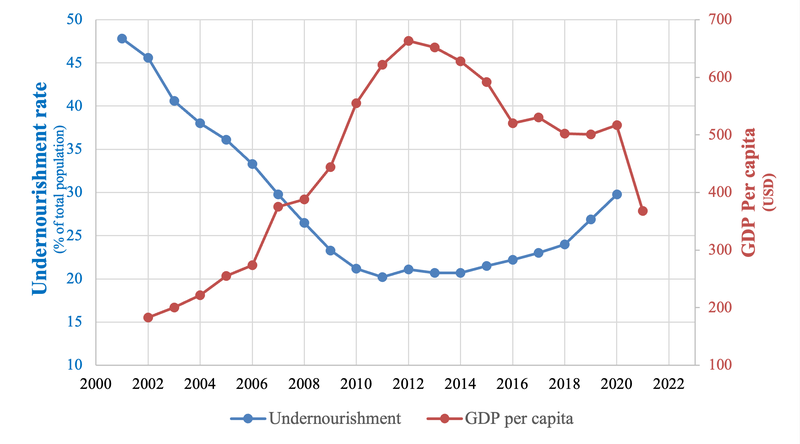
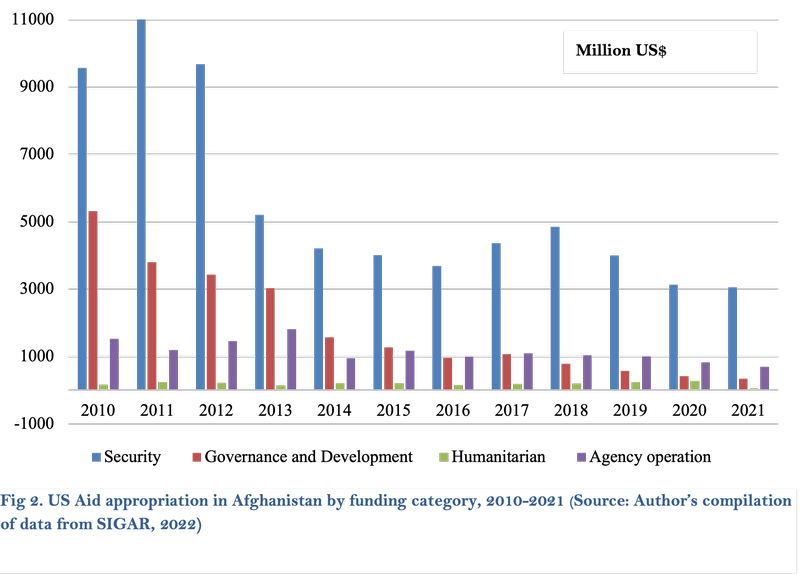
Box 1. Prioritizing the Displacement-Environment Nexus: Refugee and IDP settlements as social-ecological systems (DENexusProject)
DENexusProject is a research project funded by the Research Council of Norway and based at CMI, Chr. Michelsen Institute in collaboration with Northern Arizona University, USA. The project aims to pilot a novel approach to understanding the relationship between displaced people and the environment. Using social-ecological system framework, the project assesses the interlinkages between IDP and refugee settlements, their livelihoods, landscape change and environmental health.
Existing refugee and humanitarian studies often identify environment as a driver of involuntary migration and there is a general dearth of focus on how displaced population interact with the newly settled area. Moreover, studies covering this theme predominantly apply social science perspectives, with little focus of natural science approaches. This project attempts to fill this gap by integrating remote sensing-based assessments of landscape change with historical, ethnographic, and participatory approaches.
Research is sited in long-term IDP settlements in Kabul, Afghanistan, and 60- year-old Tibetan refugee settlements in Karnataka, India. The analysis will identify patterns in livelihoods, landscape change, and health over these multi-decade timeframes, building an interdisciplinary historical analysis.
Another dimension of socioeconomic disparities is linked with cultural and political power dynamics. State building in Afghanistan has historically been shaped by the dynamics of selection and exclusion in the distribution of state power, opportunities, and resources. As a result, exclusion, discrimination, and subtle forms of conflicts among communities of different race, ethnicity, sect, language, and gender are experienced in all spheres of daily public life. This type of political and social relation also affects access to natural resources with direct economic ramifications. Customary laws and regulations are still significant in managing land tenure and landownership in Afghanistan. In this context, conflicts between farming and nomadic communities, as well as within and between different ethnic groups, have always remained over the access to cultivable and grazing land. This has also been sustained by changes in access regulations under different regimes in the past. This historical dynamics of power and conflict created the context for differential opportunity structures for different groups. In this context, past growth benefited those relative few who were connected to the then ruling networks of power and patronage. Added to this was the massive corruption – from grand political corruption to daily petty corruption – that dwarfed the potential for building institutions that would foster sustainable and equitable development in the country. As a result, a large majority of the population witnessed no significant economic mobility, even in the time of economic growth. In other words, the economic growth hailed in the 2000s post-Taliban era excluded the bulk of the Afghan population, especially in the rural regions.
The emphasis on conflict and security in Afghanistan has also overshadowed the critical challenge being posed by unfolding climate change. Agriculture and pastoralism support an estimated 60–80% of Afghan livelihoods. Smallholder farming systems are dominant, meaning that climatic variabilities and any localized forms of biophysical changes have direct ramifications on livelihoods, food security and welfare of the people. Afghanistan is ranked as one of the world’s most disaster-prone countries. Over the past few decades, especially since the early 1990s, Afghanistan has experienced a rise in average temperature, increasing dry-spells and droughts, more frequent extreme weather events and disasters with devastating impacts on nature, settlements, infrastructure, human displacement, and food production systems.
According to the National Risk and Vulnerability Assessment for Afghanistan, the frequency of environmental shocks reported by rural households was much higher than that of other socio-economic and security shocks. In some regions, up to 94% households reported environmental shocks as their main livelihood stress. However, existing development emphasis has remained primarily on conflict and security, with scant consideration of environment and natural resource management. Although there have been some promising interventions in this sector, such as the National Solidarity Program, meagre funding compared to other sectors has been criticized as a significant issue. Overall, around 63% of the total US aid that flowed to Afghanistan between 2010 and 2021 was allocated for security while only around 20% was spent for governance and development (fig. 2). There were very little direct allocations for sectors like the environment and agriculture that would benefit the majority of the rural population and strengthen their capacities to adapt to environmental changes in the long run. In addition, there is also a critical lack of scientific knowledge about the interface between climate change and other vulnerabilities in the region.
In this context, this research brief aims to document long-term social-ecological changes underlying the acute livelihood crises, manifested in mass poverty, food insecurity and shifting migration trends in the suburban areas of Kabul. The preliminary findings presented in this brief will establish the ground on which to identify the critical issues for further research. In particular, this will help the research to analyze the nexus between human displacement and environmental change, predict future changes, and identify effective policy options to lessen livelihood vulnerability and safeguard environmental sustainability across scales.
Conceptual approach
We apply the vulnerability and resilience of social-ecological systems (SES) as our conceptual framework. Real-world systems consist of both social and ecological components, which are dynamic (changing in time); complex (composed of multiple parts); and adaptive (responsive to novel conditions and inputs). Localized social-ecological systems are nested within larger regional and global systems, and therefore respond to exogenous cross-scalar changes in human and/or environmental domains. In addition, there are also factors endogenous to SESs that influence their functioning. The most fundamental goal inherent to human-environmental interaction is the fulfillment of a wide array of human needs. Therefore, how well an SES is functioning in the face of changes is conceptualized in terms of its capacity to provide a sustained basis for the fulfillment of those needs and this also inherently implies maintaining environmental health. This is reflected by the concepts of vulnerability and resilience.
The vulnerability of an SES is characterized by a condition when the impacts of shocks (for example, climate change, demographic boom or rapid changes in institutions etc.) exceed its capacity to absorb them, maintain its core properties and functions, or to shift to a more beneficial state and thus leads to its degradation. The ability to absorb shocks or to adapt to change through self-organization is reflected by the concept of resilience. The resilience framework argues that human and natural systems are interlinked at different spatial and temporal scales of operation, called adaptive cycles. The adaptive cycles move dynamically through broadly characterized four phases: growth, exploitation, release or collapse, and reorganization and renewal. Through the heuristics of nested adaptive cycles, this framework enables interdisciplinary analysis of relationships between human and natural systems in the context of environmental and socio-political changes over time.
The last three decades of scholarship has advanced the conceptualization of SES dynamics by highlighting the role of multiple stressors: mutually interacting dynamic institutional, political and social structures as well as pertinent environmental changes in shaping vulnerability and resilience. Thus, cutting-edge scholarship understands the changes in social-ecological systems to have highly varied ramifications according to place-based social, economic, and environmental contexts., Reducing vulnerability and enhancing resilience, therefore, requires physical infrastructure, natural, and technological resources and economic development, and above all, proper institutional arrangements that recognize the uniqueness of human-environmental systems, are adaptive to address changes therein and ensure equity and justice in the process by addressing the difference in values, needs and priorities of people., Arguably, when confronted with acute risks, need-based short-term remedies are important for maintaining a minimum level of social and environmental wellbeing. But more importantly, addressing the underlying structural drivers is crucial to ensure sustained human well-being and environmental sustainability. Identifying the best policy options to this line, in turn, demands a nuanced understanding of the processes of long-term social-ecological changes, their impacts on livelihoods, and peoples’ adaptation at a local scale.
To realize this, we focus on the sub-urban region of Kabul and map the major components of both human and environmental systems, examine pertinent long term changes, and analyze their implication on human and environmental well-being.
Methodology
Research locations and piloting
Two settlements in western Kabul were selected as the research sites: Jabar Khan in PD 6, and Qalaye Qazi in PD 13 (Fig 3). These settlements are suitable for the type of data needed for the project due to their long history of both natural and conflict led transformation in the landscape, climate, people’s mobility and livelihoods, and access to basic services – such as health, education, sanitation, transport and electricity. The fieldwork was coordinated by our local partner Samuel Hall, a research organization based in Kabul, Afghanistan, which first conducted a one-day workshop with a team of four field-researchers to provide them a thorough training regarding the project overview and objectives, research techniques and ethics, and an in-depth idea of the interview questions.
Prior to the data collection, a pilot exercise was conducted in which the research tools were field-tested to ensure that the questions were easily understandable to the respondents and were comprehensive and appropriate to the local context. Following this, the interview guides were updated and finalized before oral history interviews and focus group discussions (FGDs) were conducted. In addition, data on landscape change has also been supplemented by image analysis using remote sensing technique.
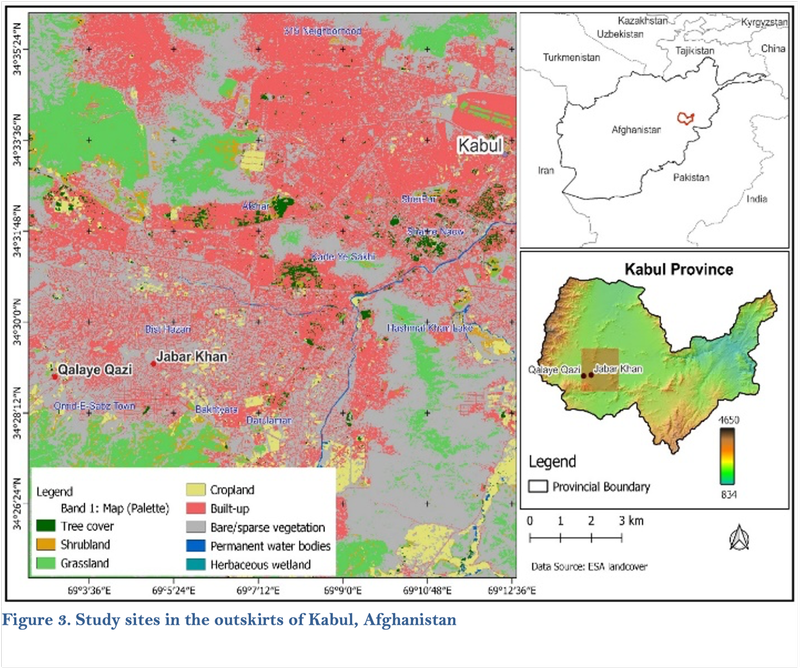
Methods
The Samuel Hall team coordinated with key local community members to select participants for the oral history interviews and FGDs. In the first phase, oral history interviews were conducted with 12 key informants: six each in Jabar Khan and Qalaye Qazi. The informants were over 40 years of age, purposefully chosen due to their experience of the long term social-ecological changes in the region.
During the second round of data collection, four field-researchers conducted FGDs. One of the researchers moderated the FGD sessions, while others took notes. At the end of each day, the field-research team sent in a report regarding the details of the day’s fieldwork: progress; problems, if any; and measures taken to best-meet the data collection protocol. The interview and FGD guides incorporated various themes of local landscape and livelihood changes including current living conditions that traced housing and living arrangements, employment and food security, and immediate livelihood and environmental stresses. In addition, long-term changes in the local landscape, climate and local environment, human mobilities, and availability of and access to public services were also a focus of the discussion sessions.
In addition to these social research methods, we also conducted remote sensing analysis of the landscape change. We undertook a time series analysis of all available, high-quality 30-m resolution Landsat images from 2000 to 2021 using the Continuous Change Detection and Classification (CCDC) algorithm. CCDC fits harmonic regressions in order to temporally segment spectral bands in satellite imagery. CCDC then uses a machine learning algorithm, random forests, trained with manually interpreted land cover labels, to classify the segmented imagery for any given time within the period of interest. Using high resolution imagery in the Google Earth Engine, we manually digitized approximately 600 training points as inputs for the random forests supervised classification. The specific land cover classes used here were arrived at by consulting existing land cover maps and high-resolution satellite imagery.
Table 1: Overview of data collection
|
Location |
Oral History Interviews |
FGDs (Total participants) |
|
Jabar Khan (PD 6 – Kabul) |
6 |
3 (15) |
|
Qalaye Qazi (PD 13 – Kabul) |
6 |
3 (15) |
|
Total |
12 |
6 (30) |
Results
The FGD sessions and oral history interviews revealed several acute stressors being experienced by the local people, which can be placed into three broad, but closely linked, classifications: loss of livelihoods due to sudden escalation of mass unemployment, extreme poverty and severe food insecurity. We take these as starting points and therefrom ‘abstract’ – attempt to uncover the underlying processes – by situating them in historical social-ecological, institutional and relational contexts., We first trace traditional livelihood patterns in the context of past social-ecological systems, then turn to the major drivers of changes, and finally present the key messages and emerging themes.
Social-ecological system (SES) and traditional livelihoods
Traditional livelihoods in the suburban region of Kabul were primarily agriculture based and agriculture was the main source of local employment. Up until the early 2000s, the local landscape had a vast amount of agricultural land. As one of our FGD participants described, there were very few settlements in the area and the farmlands were drained by large canals that supplied abundant water. The outskirts of the farmland had an abundance of forest that hosted different wildlife:
The landscape in the past was totally different from now. In the past, this entire neighborhood was a cultivated land. In the vicinity we had a dense forest with many wild animals, mainly wolves, that often stole our sheep. There were big canals that supplied abundant water to farmlands. The road was, however, too rudimentary for vehicles, and therefore travel to Kabul would be a full day’s trip. (FGD, Jabar Khan, April 2022)
The local farming system relied on local labor. Large landowners employed numerous farm laborers or leased out land on sharecropping contracts, while others worked on their own farms.
Apart from agriculture, some of the locals also sought employment in the limited construction sector for which they had to commute to Kabul or other areas. Moreover, some migrated to towns and cities for seasonal wage labor during the winter when there was little farm work. Women working outside their homes and own farms was not common, but some of them were employed in small industries making kilims (rugs). The following quote from one of the interviews illustrates this:
Almost all people here were farmers, gardeners, shepherds, and ranchers. I belonged to a farming family. We were able to obtain whatever we needed to subsist by working in the fields and growing crops. Actually, we had more than enough food. But other jobs such construction work, carpentry and tailoring were also available. Women from many households also worked in cottage industries making kilim. (Oral History Interview, Jabar Khan, April 2022)
The abundance of land, labor, and water provided ample opportunities for producing diverse food items such as wheat, potatoes, beans, carrots, and radishes. In addition, the area had several orchards that produced different fruit, including apples and apricots. Livestock was also an integral part of the local farming system and animal-based products, such as dairy and meat, were mostly consumed locally and sold in limited quantities in surrounding areas. As demonstrated in our FGDs and oral history interviews, the local population generally regarded their food security as robust, and their diets diverse:
We cultivated wheat, potatoes, tomatoes, onions, squash and produced a lot of fruits including apple, apricot, plums and grapes. We had plenty of diverse food at our disposal then. (Oral History Interview, Qalaye Qazi, April 2022)
People produced their own crops and those having no land of their own worked on wage or sharecropped with those who owned large land. Almost all had cows and big flocks of sheep. Milk and dairy products were more abundant than now. People slaughtered sheep in the late autumn that would supply meat for the household for the whole winter. (FGD, Jabar Khan, April 2022)

Social-Ecological Systems (SES) and livelihood change
A number of socio-economic and environmental changes have driven livelihood and landscape shifts in the region. The most significant economic change in the area around Kabul started in the early 1980s with the building of brick kilns. By the 1990s, the area hosted dozens of brick kilns that created thousands of jobs and attracted people from other rural areas to relocate due to the increased employment opportunities. However, the brick kilns also had detrimental environmental impacts as the kilns required that the local hills were mined for clay, which by taking away fertile soil degraded farmlands. During operation the kilns consumed freshwater from local canals and wells, and relied on a local supply of wood for fuel, thus negatively affecting both forest and water resources. Moreover, the rise in population due to the new job opportunities and the subsequent increase in land prices for housing drove a gradual decline in the land area dedicated to farmlands and agriculture.
Our remote sensing results align with the observations of local residents and show an increase in built-up land from 2000 to 2021, mostly at the expense of natural lands (fig. 4). The expansion of the built-up area pushed agricultural land use further into the surrounding landscape. There was a ~68% increase in urban extent in the area (~3% per year). There was a decrease in agricultural land of ~14% (~0.7% per year). The context of both settlements has changed significantly over the last two decades, shifting from a largely rural and/or peri-urban context to a largely urban one.
According to our respondents, air pollution was another important environmental impact of brick kilns. By the early 2000s, the local government had to take measures to remove the kilns from the area:
During the 1970s and 80s, dozens of brick kilns were built in the area which supplied bricks to all areas of Afghanistan. They offered thousands of jobs for the local people and returnees who came back to Afghanistan from Pakistan and Iran. However, these kilns were polluting the weather because they were producing a lot of smoke because they burned all sorts of fuel in very large amounts. (Oral History Interview, Jabar Khan, April 2022)
While the most significant socioeconomic driver of change of the local SES was the proliferation of brick factories, the gradual decline of water availability is the most significant environmental driver of change. Over the past three decades, Afghanistan has experienced a decline in precipitation and episodic dry spells/droughts are becoming increasingly common. Our review of various sources revealed that several periodic droughts/dry spells have occurred in the last two decades: from 2000-2003, 2008-2010, 2011, 2018, and from 2021–2022. The local people express the local pattern of this change in terms of subsiding water table and drying up of canals.
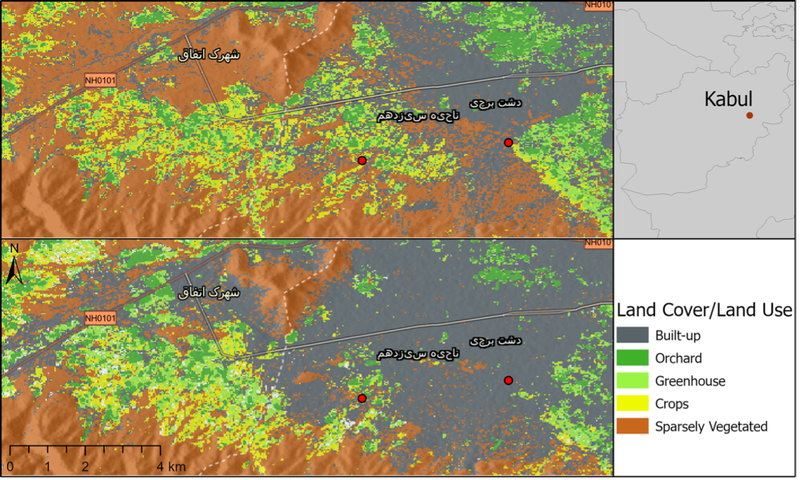
Red markers indicate the approximate locations of the settlements.
When I came here for the first time (in the early 2000s), people had access to abundant water in the canals. Some of the households had their private wells. However, over the recent years, the underground water level went down. Therefore, people are now forced to dig deeper wells that have successively reached up to 120 meters. (Oral History Interview, Qalaye Qazi, May 2022)
The shortage of water has had an impact on farming. Already experiencing decline due to the economic changes mentioned above, agriculture has experienced the most significant effects of water constraints. The effects have been so extreme that large scale cultivation has been abandoned. As one of our respondent’s remark below, farming for many has shrunk to the size of a kitchen garden:
It’s been almost 10 years since farming has been completely abandoned in our neighborhood due to the shortage of water. There are only a few households that produce some vegetables, like onions at most, in their kitchen garden now. (Oral History Interview, Jabar Khan, May 2022)
Water shortage is now so severe that households struggle to manage water even just for household consumption, let alone for irrigating crops. Meanwhile, several companies have discovered a market for water. To extract enough water for commercial use in the context of a subsiding water table, very deep wells need to be drilled. The digging of these wells is beyond the financial and logistical capacities of individual households, as articulated by a participant in an FGD session:
Water is so scarce now that we need to dig as deep as 120 meters to find the water table. Such wells are beyond our financial and technical capacity. Therefore, many water distribution companies have been founded which use very large drillers to drill wells as deep as 150 meters, extract water and sell it to us.
The population’s increasing reliance on these distribution companies for water, has, however, not been accepted uncritically as their obvious fate in the circumstance of changing environment. They see the reliance on distribution companies as a systematic appropriation, or “capturing” of water resource that has not eased, but rather jeopardized their access to water:
The reason why there is no water in our shallower wells is because these companies capture all water from their deeper wells. Although increased demand for water due to growing population is also a problem, deep wells are the primary problem of water scarcity here. (Both quotes from FGD, Qalaye Qazi, May 2022)
Further research is needed to understand the social and environmental drivers that underlie changes in water resources. In this line, the research will combine remote sensing data with field-based social analysis of social and environmental changes in the next phase.
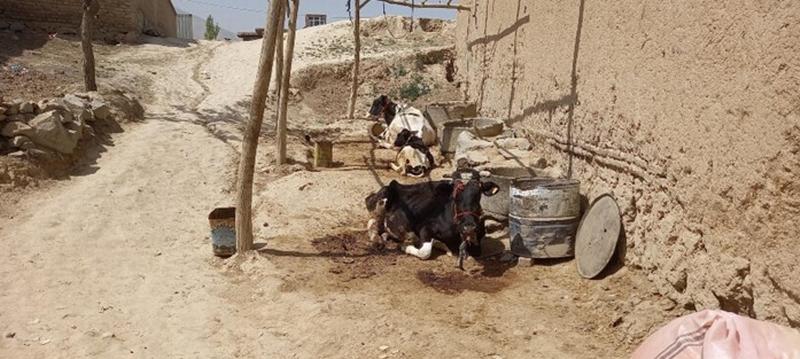
Food security and wellbeing
The systemic changes in the local environment and livelihoods have had a direct impact on peoples’ food security and health. Previous agricultural livelihoods were more resilient to unfavorable economic changes at the regional and national level. This resilience meant that individuals could maintain a basic level of subsistence from farming, despite changes in prices or in employment situations off-farm. However, in the last two decades, self-sustaining agriculture-based livelihoods here have gradually transited to off-farm employment-based livelihoods in the construction sector and urban-based service sector. This has not only detached people from the agricultural products that they controlled but has also increased their vulnerability to changes in employment resulting from economic and political shocks – the most severe of which was experienced after the political shifts in August 2021.
Those who still have some land and are willing to continue farming have faced severe shortage of water for irrigation which has crippled local food production. As a result of food shortages, many families have lost their capacity to access adequate calories. All respondents participating in the study agreed that due to poverty, their diet quality has been diminishing. Nutritious foods that were previously part of a normal diet, such as meat and fruit, have now become like luxury foods. One of the participants in an FGD session said:
Our food has changed a lot. In the past, we had jobs, so we were able to make money. In addition, food prices were low. My father used to bring meat every Thursday. But now, everything has changed. We do not have jobs, so we do not have money to pay for the goods. The prices are also very high. (FGD, Jabar Khan, May 2022)
In addition to poor diet quality and nutritional deficiency, people are experiencing poor access to other complementary assets and services needed for good health. Although most houses have managed to build latrines, the area is still not free of open defecation. The drainage system is quite poor, and the respondents complained about the frequent prevalence of water borne diseases.
The most significant health problem relates to air pollution. According to the respondents, dust bowls leading to air pollution have become more common due to a lack of vegetation and a drier environment. Rising poverty has also led many families to revert to cheaper energy sources, such as burning plastic and coal, to cook food and warm themselves during the winter. Consequently, there is a high prevalence of respiratory diseases.
Rapid urban growth and economic changes have led to heavy private investment in the health sector. As a result, there have been significant improvements in health facilities in the area, especially in terms of the availability of clinics and health personnel. However, rising unemployment and poverty is making it harder for normal people to access these facilities because the expensive health services are beyond their affordability. There is little that poor people can do in this situation, other than live with ill health.
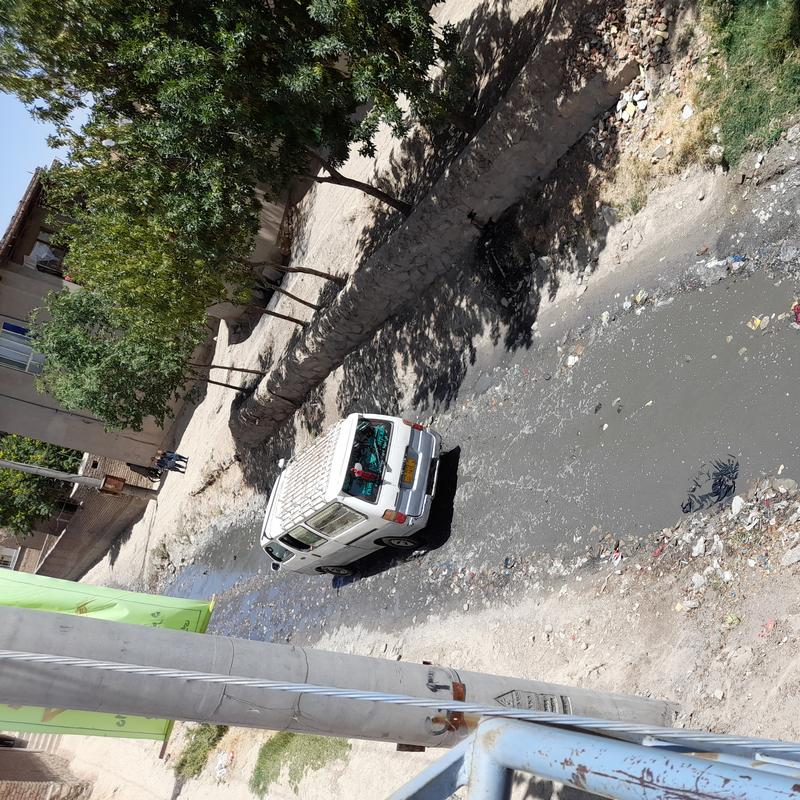
Summary and emerging themes
Afghanistan is facing an economic crisis and millions of people are in urgent need of humanitarian assistance. Applying a social-ecological system framework, this report has attempted to move beyond just conflict and other proximate reasons of poverty to understand how long term socio-economic and environmental changes have created the context for vulnerability. The empirical findings highlight that the loss of livelihoods is driven by multiple interacting factors, of which climate change is significant. Increasing drought and dry-spells and consequent water scarcity is a key issue leading to the loss of traditional farming-based livelihoods. During the economic boom in the 2000s, a large number of Afghans shifted from farming to urban-based employment, mainly in the construction and service sectors. However, the job market in these sectors dwindled with the slowing economic growth after the early 2010s. Against this background, the collapse of the financial system after the political change in 2021 has led to the escalation of unemployment and spurred poverty and food insecurity.
Our mapping of these main environmental and socio-economic changes (although preliminary and broad) illustrates the transition of the local social-ecological systems from being resilient to vulnerable in the period between the 1970s and 2020s. In conceptual terms, it can be interpreted that the social-ecological system of the past in this area had better availability of natural resources (water, land and pastures) for undertaking traditional farming than it has now. This resource availability, viewed independently from conflict and insurgency, provided resilience to food insecurity and poverty, first by providing control over food, and second by ensuring some level of sustained employment for the local labor. The current condition is that farmers have largely abandoned farming and thus access to farm-based food is lost, but employment in the urban based construction and service sector too has collapsed. Additionally, changing land use patterns, drought, and land degradation are constraining the revitalization of agriculture.
This report has outlined the preliminary analysis of the study. A number of critical issues and themes have emerged from the findings that are worthy of further examination.
- The issue of environmental change and reduced human well-being has emerged as an important area that demands more in-depth study in the region. The Taliban government has recently reinvigorated Afghanistan’s National Environmental Protection Agency (NEPA), which indicates that the Taliban leadership takes environmental change as a critical development issue for the country. The next phase of this study will examine the various environmental and socio-political shifts pertinent to the different phases of the adaptive cycles of the SES to produce theoretically grounded and policy-relevant knowledge. Therefore, the policy relevance of the project will be very high.
- Air pollution is a major concern for the local population and is driven by the development of industries and consequent changes in landscape, as well as increasing dry-spells and droughts. Moreover, poverty is leading many families to revert to cheaper fuel such as coal and plastic, which is causing extreme indoor air pollution. A more detailed examination of this issue will be done in the next phase of the project.
- Water is a critical issue and is widely examined in the context of climate change, which is also relevant for Afghanistan. However, our preliminary findings highlight that the commercialization of water service is one of the significant aspects of water crisis. The research will further focus on socio-political (through social science methods) and environmental (through remote sensing method) dynamics to understand how they together shape water crisis in Afghanistan.
- Human mobility remains one of the key factors of livelihood and landscape change. However, there is a need to see mobility as a complex process that is linked not only to violence and insecurity but also is driven by economic motivation. Spatial mobility in Afghanistan is almost always conceptualized in term of conflict-based displacement. Our findings open up avenues for adopting a more open and exploratory approach in which environmental change and conflict will not be viewed only as drivers of mobility/displacement, but human spatial mobility itself being a significant driver of environmental and landscape change.
- Regardless of the massive flow of aid in the last decades, there are communities, who despite living in poverty, have had no access to external humanitarian assistance. Our discussion revealed that the aid distribution system has been distorted and people belonging to certain groups or having political access or powerful connections have had easier access to aid than others. Further research is needed to understand how power asymmetries and subtle forms of conflict among people drive the process of exclusion and discrimination leading to marginalization and poverty.
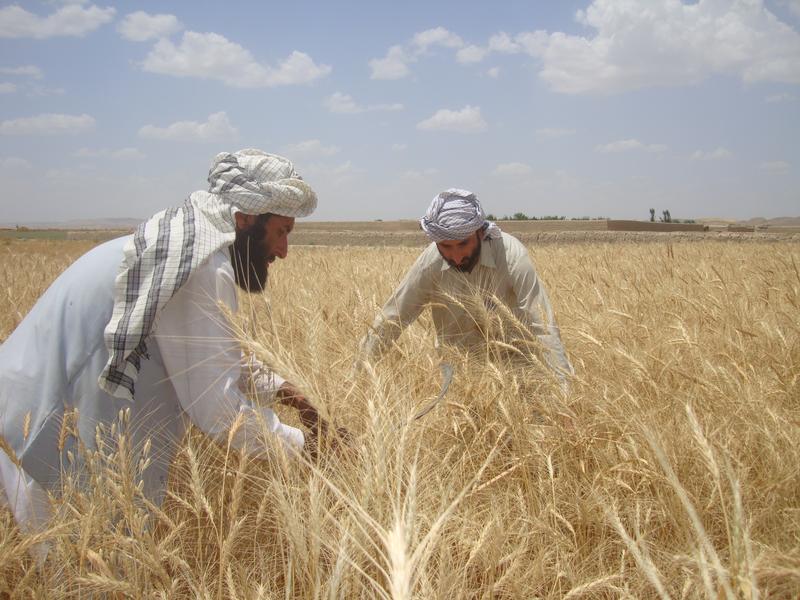
Farmers inspect wheat in Balkh, Afghanistan.
References
UNDP (United Nations Development Program) (2022). Afghanistan since August 2021. A socio-economic Snapshot. Kabul: UNDP.
UNDP (United Nations Development Program) (2021). Economic Instability and Uncertainty in Afghanistan after August 15, A Rapid Appraisal. Kabul: UNDP
Ahmandi, B. & Sultan, H. (2023). Taking a Terrible Toll: The Taliban’s Education Ban. United Nations Institute for peace. Available online: https://www.usip.org/publications/2023/04/taking-terrible-toll-talibans-education-ban
(SIGAR) Special Inspector General for Afghanistan Reconstruction (2021). What We Need to Learn: Lessons from Twenty Years of Afghanistan Reconstruction. Crystal Drive: SGIAR.
Koser, K (2011). The Migration-Displacement Nexus and Security in Afghanistan. In K. Koser and S. Martin (Eds.) The Migration-Displacement Nexus: Patterns, Processes, and Policies (131-143): Berghahn Books
Gordon, S. (2011). Winning Hearts and Minds? Examining the Relationship between Aid and Security in Afghanistan’s Helmand Province. Boston: Feinstein International Center.
Parlow, A. (2016). Child mortality and the war on terror: Afghanistan from 2007 to 2010. HiCN Working Paper 220. Brighton, UK: Households in Conflict Network.
Bove, V. & Gavrilova, E (2014). Income and livelihoods in the war in Afghanistan. World Development, 60, 113–131.
Hirosa et al. (2017). Can civilian attitudes predict insurgent violence? Ideology and insurgent tactical choice in civil war. Journal of Peace Research, 54(1), pp: 47–63.
Imrahimi, N (2017). The Hazaras and the Afghan State: Rebellion, Exclusion and the Struggle for Recognition. London: Hurst and Company.
Berfield, T (2010). Afghanistan: A Cultural and Political History. Princeton: Princeton University Press.
Afghanistan Independent Human Rights Commission (AIHRC) (2019). Evaluation of Average Implementation of the International Convention on Elimination of All Forms of Racial Discrimination. Kabul: AIHRC.
Giustozzi, A. (2018). Typologies of nomad-settler conflict in Afghanistan. Issues Paper. Kabul: Afghanistan Research and Evaluation Unit.
Bak, et al. (2019). Corruption in Afghanistan and the role of development assistance. U4 anti-corruption resource Center. https://www.jstor.org/stable/pdf/resrep20486.pdf
Strand, A. & Taxell, N. (2016) Review of Norwegian development assistance to Afghanistan 2011–2014. CMI Report. Bergen: CMI
Food and Agricultural Organization (fao) (2018). 15 Years in Afghanistan a Special Report: 2003–2018. Kabul: FAO.
World Bank Group (2017) Disaster Risk Profile, Afghanistan. Washington DC: The World Bank
Nagl et al. (2009). A Pathway to Success in Afghanistan: The National Solidarity Program. Policy Brief. Center for a New American Security.
Vakulchuk, et al., (2022). A void in Central Asia research: Climate Change. Central Asian Survey, https://doi.org/10.1080/02634937.2022.2059447
Levin et al. (2013). Social-ecological systems as complex adaptive systems: Modeling and policy implications. Environment and Development Economics, 18(2), 111–132.
Holling, C. S., & Gunderson, L. H. (2002). Panarchy: Understanding transformations in human and natural systems. Washington, DC: Island Press.
Kates et al. (2012) Transformational adaptation when incremental adaptations to climate change are insufficient. Proceedings of the National Academy of Sciences, 109:7156–7161.
Turner BL, et al. (2003) A framework for vulnerability analysis in sustainability science. Proceedings of the National Academy of Sciences 100:8074–8079.
Chapin FS, et al. (2009) A framework for understanding change. In: Chapin FS, Kofinas GP, Folke C, Chapin MC (eds) Principles of ecosystem stewardship: resilience-based natural resource management in a changing world. Springer Science and Business Media, New York, pp 3–28.
Rosen, A. M., & Rivera-Collazo, I. (2012). Climate change, adaptive cycles, and the persistence of foraging economies during the late Pleistocene/Holocene transition in the Levant. Proceedings of the National Academy of Sciences, 109(10), 3640–3645.
O’Brien et al., (2007) Why different interpretations of vulnerability matter in climate change discourses. Climate Policy 7:73–88.
O’Brien, et al. (2004). Mapping vulnerability to multiple stressors: climate change and globalization in India. Global Environmental Change 14, 303–313
Gautam, Y. & Andersen, P. (2017) Multiple stressors, food system vulnerability and food insecurity in Humla, Nepal. Regional Environmental Change 17:1493–1504.
Eriksen, et al. (2011) When not every response to climate change is a good one: identifying principles for sustainable adaptation. Climate and Development 3 (2011), pp. 7-20
Inderberg et al., (2014) Climate change adaptation and development: transforming paradigms and practices. Routledge, New York.
Zhu, Z. & Woodcock, C.E. (2014). Continuous change detection and classification of land cover using all available Landsat data. Remote sensing of Environment, 144, pp.152-171.
Breiman, L., (2001). Random forests. Machine learning, 45(1), pp.5-32.
Lawson, T. (1997). Economics and Reality, London: Routledge.
Brown et al. (2002). Driven to abstraction? Critical realism and the search for the ‘inner connection’ of social phenomena, Cambridge Journal of Economics, 16 (6).
Acknowledgements
This report is based on data collected in Kabul, Afghanistan. We sincerely thank Samuel Hall for coordinating the data collection task. We also thank Alder Saxena and Arne Strand for their comments and their work on the project and the report, and Til Prasad Pangali for preparing the study area map.



